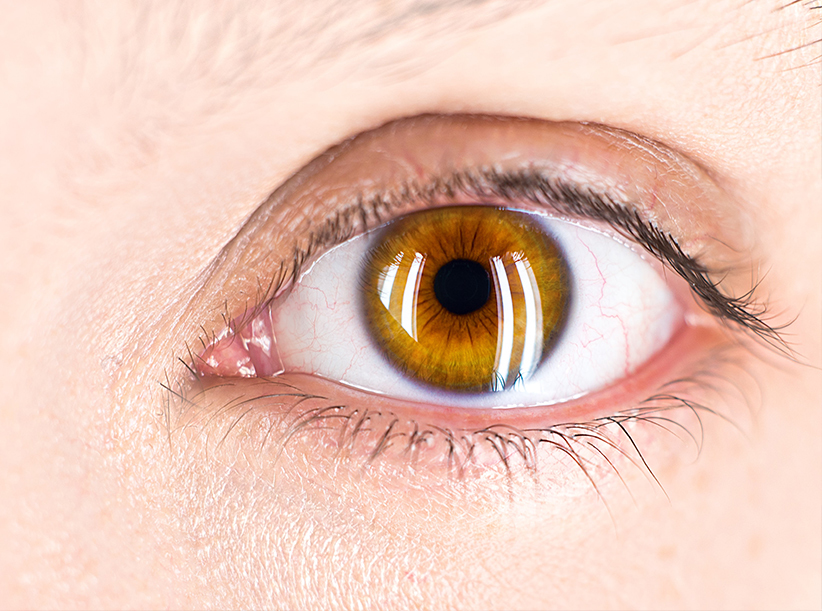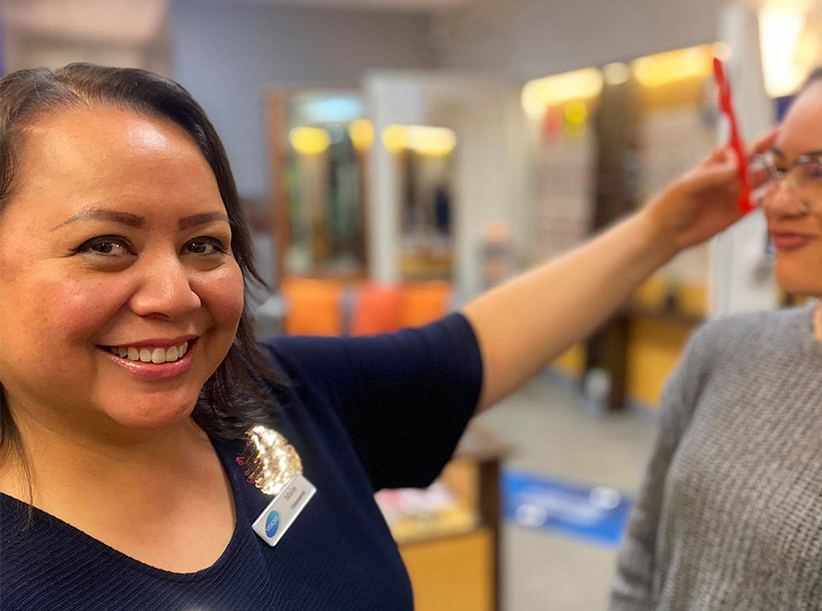Diabetes & Retinopathy - How to detect, treat and prevent it

One of the most distressing and difficult complications of diabetes is reduced vision. Diabetes is the leading cause of preventable blindness in the adult population.
Diabetic retinopathy is an eye disease that can affect many parts of the eye, including the retina, macula, lens and the optic nerve.. This is caused by damage to the blood vessels of the light-sensitive tissue that lines the back of the eye called the retina. Diabetic retinopathy is the most common cause of vision loss among people with diabetes. It is also the leading cause of vision impairment and blindness among working-age adults. While at first it may have no symptoms, it can lead to mild vision problems, then if left undiagnosed and untreated, blindness can occur. If you are struggling with diabetes, or are just looking to learn more about the potential conditions that can affect your eyes, read on as we explore what diabetic retinopathy is and how it’s managed.
What is a Diabetic Retinopathy?
Diabetes may cause damage to the eye’s light sensitive lining, the retina, and produce changes called diabetic retinopathy. Diabetic retinopathy is an eye condition specifically related to diabetes. When the blood sugar level is too high, blood vessels in the body can be damaged, including those in the retina, which is the light sensitive lining covering the back of the eye. The retina is responsible for sending signals to the brain via the optic nerve and specifically deals with the detection of light.
If the tiny blood vessels in the retina experience a blockage, this leads to damage which can weaken existing blood vessels causing bleeds within the eye and can prompt the growth of abnormal new blood vessels. High blood sugar can also lead to things like fluid accumulation which can alter the lens shape and impact vision.
Diabetic retinopathy is one of the leading causes of blindness in New Zealand with it estimated that 30% of people with diabetes have some degree of retinopathy, with 10% having sight-threatening retinopathy. A New Zealand study of almost 12,000 people with diabetes, conducted between 2003 and 2005, found that almost one-third (32%) had some signs of diabetic retinopathy, making it a common and serious condition affecting many kiwis.
Knowing your family history for diabetes is key as you may have an increased risk of developing diabetic retinopathy if measures aren’t taken to care for your health.
What are the symptoms?
One of the tricky things when you develop diabetic retinopathy is that at the early stages, there are few, if any symptoms.
While some people notice changes in their vision, or have difficulty reading or seeing things from a distance, these changes can come and go or be very slight.
Changes in vision may happen at the time that diabetes is first diagnosed or at any time that blood sugar control is poor. Fluctuating blood sugars cause the lens to swell and shrink, and result in fluctuating vision.
Besides blurry vision, you may also experience spots or floaters, or have trouble with night vision. You might also have blurry vision if you're developing cataracts. People with diabetes tend to develop cataracts at a younger age than other adults. Cataracts cause the lens of your eyes to become cloudy.
In the later stages of the disease, symptoms become more pronounced, with blood vessels in the retina bleeding, fluid build up and other symptoms like floating spots and your eyes leaking fluid. At this stage, it’s crucial to head to an eye specialist as soon as possible to seek treatment and management as it can lead to loss of vision.
Treatment & Prevention of Diabetic Retinopathy
Vision lost to diabetic retinopathy is sometimes irreversible. However, early detection and treatment can reduce the risk of blindness by 95 percent. With diabetic retinopathy being asymptomatic until the advanced stages, the best treatment is early detection and prevention. That’s why it’s important to have regular comprehensive dilated eye examinations if you suffer from diabetes.
For this, taking care of your health and managing your diabetes are the first steps you should be taking. This means regulating your blood sugar levels by exercising, eating a balanced diet and seeing your doctor regularly for check ups. You should also use diabetes medicines and use insulin appropriately if prescribed.
An HbA1c test is a test that can help you control your blood sugar, showing your average blood sugar over a 3-month period and a baseline that you can then look to lower or manage.
High blood pressure or cholesterol in addition to diabetes also increases your risk for diabetic retinopathy. When you control related symptoms and diabetes, eye health can be maintained much better .
Smoking increases the risk of serious eye disease.
At Visique Eye Spy Optometrists, we conduct regular diabetic retinal screening clinics. Usually a referral from your GP is obtained, then we arrange an appointment for you to see us. Photographs of the back of your eyes (your retina) are taken to see if there are any changes related to diabetes. To ensure we have clear images, eye drops af often used to dilate your pupils. This may affect your vision in the short term, so we encourage you to bring a driver with you and a dark pair of sunglasses. This diabetic retinal screening service is often covered by the government and is free to you if you are a NZ citizen or resident. Please note that this is NOT the same as an eye examination normally undertaken by our Optometrists. The diabetic retinal screening service cannot prescribe spectacles or contact lenses for you.
We then relay the results of your diabetic retinal screening back to your doctor as part of our shared care with your best interests in mind. Sometimes additional referral to our local Ophthalmologist may be necessary if there are signs that the diabetic retinopathy is not controlled, and may require intervention.
We will also advise you when we need to review your eyes again for your next diabetic retinal screening.
Women with diabetes who become pregnant should have a comprehensive dilated eye examination as soon as possible as eye disease can get suddenly worse in pregnancy.
What’s the treatment for diabetic retinopathy?
If you do have diabetic retinopathy, the best treatment starts with regular visits to our optometry practice. We will monitor your condition and recommend the appropriate intervals for reviewing your eyes. We can also suggest lifestyle changes and natural treatments to support your overall health.
You may need to be referred to an Ophthalmologist for ongoing medical care. If diabetic retinopathy threatens vision, it may require laser treatment by an Ophthalmologist. The laser seals leaking retinal blood vessels which cause damaging deposits of fat to occur in the macula. Laser also stops the growth of fragile blood vessels (neovascularization) which may bleed and reduce sight suddenly.
In the later stages of diabetic retinopathy, this is where treatment is crucial. But what exactly are the available treatments?
Laser surgery
Laser surgery is a treatment option that can help to seal abnormal blood vessels that are leaking. This can also shrink them and prevent them from growing which is a key contributor to the worsening of eye conditions. Your eye specialist will advise you on whether this is the best course of treatment.
Injections
Another mode available for diabetic retinopathy treatment is anti-VEGF medication. These help to reduce swelling of the macula, slowing the rate of vision loss while potentially improving vision. Given via injection into the eye, it’s a common treatment that can potentially yield fantastic results. Corticosteroids are yet another option that can be helpful for reducing macular swelling. Steroid medication can also help reduce macular swelling.
Vitrectomy
Vitrectomy is a surgical option, recommended at times by Ophthalmologists to people with advanced diabetic retinopathy. This treatment is invasive and involves the removal of vitreous gel and blood from leaky vessels in your retina. Scar tissue can also be removed from the retina and these will help to stop the deterioration of your eye and can potentially restore vision.
Ultimately the key to eye health always starts with a healthy lifestyle. To avoid diabetic retinopathy, visit your doctor and optometrist regularly and try to live a healthy, active lifestyle.
For those with diabetes, diabetic retinopathy is a risk factor that you can manage by being proactive. In addition to taking care of your overall health, regular visits with your optometrist will ensure you are keeping track of your eye health and are aware of the development of any symptoms or signs of this retinopathy in its early stages. If they’re detected, our optometrists will offer advice that will help you manage and preserve your vision as best as possible so you can live a healthy, happy life.
At Visique Eye Spy, we help to manage diabetic retinopathy through thorough eye examinations with friendly, professional care. We will take digital fundus images of your retina and show you what your eyes look like inside. A picture really says a thousand words, and you’ll be able to see what we see. We’ll then be able to show you how healthy your eyes look, or where problem areas are. With regular checks over time, we will be able to compare results and let you know whether your eyes are improving, are stable or deteriorating. Where further treatment may be required, we liaise directly with the Ophthalmologists in the Eye Clinic at Mid Central Health to co-manage the care of diabetic retinopathy.
It is very important to have regular retinal examinations so that any abnormality can be detected and treated appropriately.
Come and visit us at Visique Eye Spy Optometrists and speak to one of our staff about your options today.
The Visique Eye Spy Team
